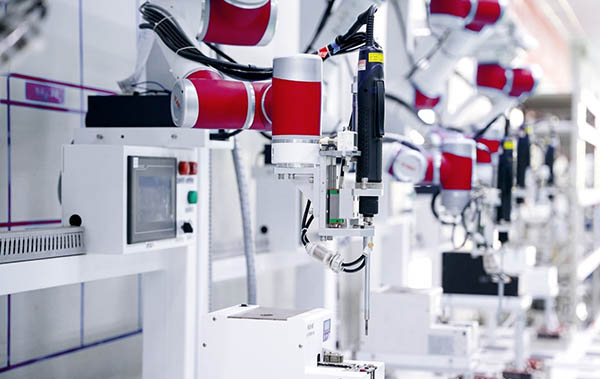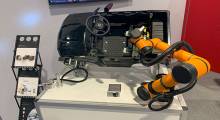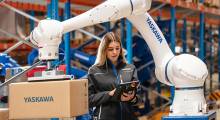Collaborative robots are among the fastest growing categories of industrial automation. JAKA Robotics this week announced that it has successfully completed around $150 million Series D financing in the first half of 2022. The Shanghai-based company said it plans to use the funding to develop new cobots “with more flexibility and intelligence” and continue global outreach.
“As a leader in the new generation of cobots, JAKA Robotics has formed nine core technologies and six core algorithms, creating highly flexible intelligent solutions for industrial manufacturing that can be used in a wide range of scenarios,” said Li Mingyang, CEO of JAKA Robotics. “Our cobots have extensive communication interfaces and are equipped with vision systems, force sensors, and other external devices.”
“The perception equipment and robot design can be deeply integrated,” he added. “It enables robots to independently carry out task planning in a complicated, unstructured environment, realizing the progress from human-machine cooperation to human-machine integration, covering more production areas.”
Founded in 2014, JAKA stands for “Just Always Keep Amazing.” The company said it has used in robotics innovations such as drive control integration, integral joints, free-drive programming, and wireless connections. Its stated mission is “Free Your Hands By JAKA” and facilitating the entry by enterprises worldwide into the the era of Industry 4.0.
JAKA Robotics builds on cobot innovations
JAKA Robotics said its technology is based on industrial automation developments since 1979. With business divisions dedicated to robotic torsos, systems integration, and digital factories, the company offers robots with payload capacity ranging from 1 to 18 kg (2.2 to 39.6 lb.).
Through operational, scenario-based, and artificial intelligence capabilities, JAKA said it is addressing customers' needs. To date, the company said it has supported practical applications such as handling, palletizing, machining, testing, bonding, screw locking, polishing, and welding.
JAKA stated that its collaborative robots have increased production capacity and efficiency, reduced heavy physical labor for human workers, increased worker safety, and mitigated high staff turnover.
The vendor claimed that more than 10,000 of its cobots are in operation worldwide, including in the production lines of well-known brands in the automotive, electronics, semiconductor, and other industries. It has established technology centers in Japan and Germany and is working with more than 300 automation companies to provide localized services.
Earlier this year, the company launched the new JAKA Pro series to operate in harsh environments. JAKA Pro robots are IP68-rated and can run for nearly six years without interruption, it said.
Global investors join Series D funding
Temasek, TrueLight Capital, SoftBank Vision Fund 2, and Prosperity7 Ventures, and the diversified growth fund of Aramco Ventures led JAKA Robotics' Series D round. One strategic investor also participated.
“We believe Jaka Robotics is one of the leading collaborative robot companies in China who is helping manufacturers boost productivity,” said Dennis Chang, managing partner at SoftBank Investment Advisers. “With its strong in-house R&D capabilities, Jaka's robots are high-performance and strongly suited for multiple industrial use cases, which is recognized by its global partners.”
JAKA said its Series D financing marks an industry record, and its Series C and C+ financing rounds in 2021 were $50 million.
“Robotics has tremendous growth potential as a future megatrend, especially as human-machine interaction plays a critical role in the age of Industry 4.0,” stated Aysar Tayeb, executive director of Prosperity7 Ventures. “Prosperity7 will leverage its Aramco-funded connections to help JAKA Robotics scale and globalize. We are always looking to partner with pioneers in their respective industries to enable continued growth and transformation and have a positive impact on people's lives.”
The global market for collaborative robots could expand from $894.6 million in 2021 to $3.21 billion by 2026 at a compound annual growth rate (CAGR) of 27.1%, according to Research and Markets. More bullish, Markets and Markets projected cobot growth from $1.2 billion in 2021 to $10.5 billion by 2027 at a CAGR of 43.4%.
Article topics
Email Sign Up
















